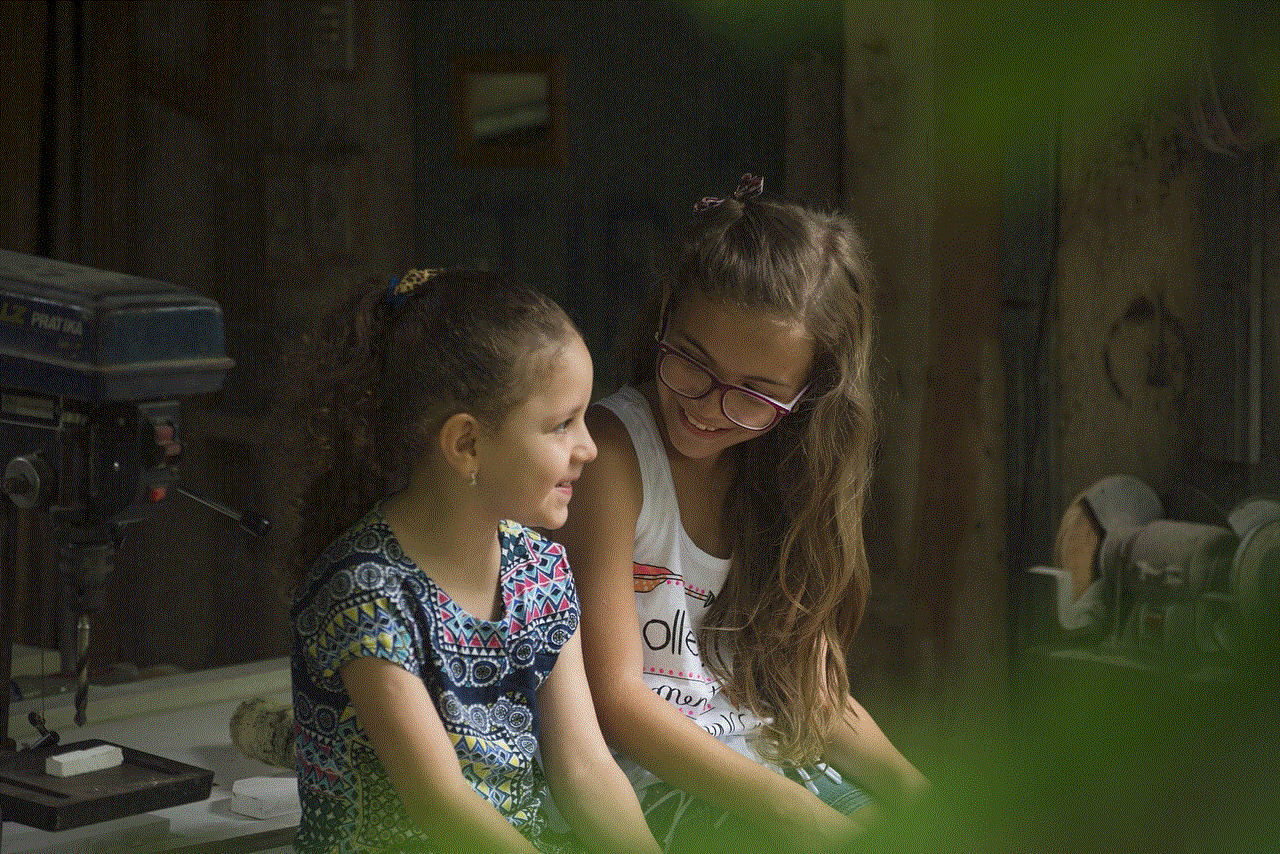cool things for 10 year olds
As a parent or caregiver of a 10 year old, you may often find yourself wondering how to keep them entertained and engaged in activities that are both fun and age-appropriate. With the ever-growing world of technology and social media, it can be challenging to find ways to keep your child’s attention without resorting to screen time. But fear not, there are plenty of cool things for 10 year olds to do that will not only entertain them but also help them learn and grow.
In this article, we will explore some of the top cool things for 10 year olds, ranging from hands-on activities to creative outlets and educational opportunities. These activities are not only fun and engaging but also promote important skills such as creativity, problem-solving, and critical thinking.
1. STEM Projects and Experiments
STEM (Science, Technology, Engineering, and Math) activities are a great way to introduce your 10 year old to the world of science and technology. These projects and experiments can be done at home with simple, everyday materials, making them both accessible and budget-friendly.
There are endless possibilities when it comes to STEM activities for 10 year olds. They can build their own mini solar-powered car, create a volcano eruption using baking soda and vinegar, or make a homemade lava lamp. These hands-on experiments not only spark curiosity but also teach important scientific concepts and principles.
2. Art and Crafts
Art and crafts are not only fun for kids but also allow them to express their creativity and imagination. From drawing and painting to sculpting and collage-making, there are endless possibilities when it comes to art and crafts for 10 year olds.
You can encourage your child to try different mediums and techniques to keep things interesting. For example, they can create a mosaic using recycled materials or make a clay sculpture. Not only does this allow them to explore their artistic side, but it also promotes fine motor skills and hand-eye coordination.
3. Outdoor Activities
With the rise of technology, many children today spend a lot of time indoors, glued to screens. However, it is important for 10 year olds to get outside and engage in physical activities to stay healthy and active.
There are plenty of cool outdoor activities for 10 year olds, such as bike rides, hikes, and nature walks. You can also take them to a nearby park to play sports like soccer or basketball. Not only does this promote physical health, but it also allows them to connect with nature and develop a love for the outdoors.
4. Cooking and Baking
Cooking and baking are not only essential life skills but can also be a fun and engaging activity for 10 year olds. You can involve your child in meal preparation or baking projects, allowing them to learn new recipes and techniques.
Not only does this promote independence and self-sufficiency, but it also teaches important skills such as following instructions and measuring ingredients. Additionally, cooking and baking can be a great bonding activity for the whole family.
5. Music and Dance
Music and dance are great ways for 10 year olds to express themselves and have fun. You can enroll your child in music or dance classes, or you can encourage them to explore their musical side at home.
You can introduce your child to different genres of music and let them experiment with different instruments. They can also create their own dance routines to their favorite songs. Not only does this promote creativity, but it also helps develop coordination and rhythm.
6. Board Games and Puzzles
Board games and puzzles are classic pastimes that are still popular among children today. They not only provide hours of entertainment but also promote important skills such as problem-solving, critical thinking, and teamwork.
There are numerous board games and puzzles designed specifically for 10 year olds, ranging from strategy games to memory games. You can also involve the whole family in game nights for some quality bonding time.
7. Coding and Programming
In today’s digital age, coding and programming skills are highly valuable and can open up a world of opportunities for 10 year olds. Many online platforms offer fun and interactive ways for children to learn coding and programming, such as coding games and apps.
Learning to code not only teaches important skills such as problem-solving and logical thinking, but it can also lead to future career opportunities in the technology field.
8. Gardening
Gardening is a great way to get 10 year olds involved in nature and teaches them responsibility and patience. You can start by letting your child help you with simple tasks like watering plants and weeding.
You can also give them their own small garden plot to grow their own fruits and vegetables. This not only allows them to learn about plants and the environment, but it also promotes healthy eating habits.
9. Volunteer Work
Volunteer work is a great way to instill important values and teach children the importance of giving back to their community. There are many volunteer opportunities suitable for 10 year olds, such as helping out at a local animal shelter or participating in a charity event.
Not only does this teach compassion and empathy, but it also allows children to learn about different social issues and how they can make a positive impact.
10. Educational Field Trips
Field trips are a fun and engaging way for 10 year olds to learn outside of the classroom. You can take them to museums, historical sites, or even a local farm to learn about different topics and subjects.
These educational outings not only provide a break from traditional learning, but they also allow children to see and experience things they may not have the opportunity to in a classroom setting.
In conclusion, there are many cool things for 10 year olds to do that do not involve screens and technology. From hands-on activities to educational opportunities, these activities not only keep children entertained but also promote important skills and values. Encouraging children to try new things and explore their interests can lead to a well-rounded and fulfilled childhood.
whats of mean in text



The use of text in our everyday lives has become increasingly prevalent, whether it be through messaging, social media, or online communication. As a result, we are constantly bombarded with new phrases, acronyms, and slang that can often leave us feeling confused and out of touch. One such phrase that has become popular in recent years is “what’s of mean in text.” This seemingly simple question has sparked a lot of curiosity and debate, and in this article, we will delve deeper into what this phrase means and its significance in the world of text.
To begin with, “what’s of mean in text” is a phrase that is often used to inquire about the meaning of a specific word or phrase in a text message or online conversation. With the rise of technology and the increasing use of text as a form of communication, it is no surprise that this phrase has gained popularity. It allows individuals to quickly and easily clarify any confusion they may have about the meaning of a certain term or expression, without having to resort to lengthy explanations or face-to-face communication.
However, the use of “what’s of mean in text” is not limited to just asking for definitions. It has also become a way for individuals to express their interest or curiosity in certain topics. For example, if someone receives a text message containing a new slang term or acronym, they may respond with “what’s of mean in text” to show their interest in learning more about it. In this way, the phrase has also become a way for people to engage in conversations and share knowledge about various subjects.
Furthermore, “what’s of mean in text” has also become a way for individuals to express their confusion or frustration with the ever-evolving language of text. With the constant emergence of new words and phrases, it can be challenging to keep up with the trends and understand the messages we receive. Therefore, this phrase has become a means for people to express their struggle with the fast-paced nature of text communication.
On the other hand, some argue that the use of “what’s of mean in text” is a sign of laziness and a lack of effort to understand the language being used. They argue that instead of using this phrase, individuals should take the time to research and educate themselves on the meaning of new words and phrases. While this may hold some truth, it is also essential to consider the fast-paced nature of text communication and the need for quick clarification. In today’s world, where time is of the essence, using this phrase can be seen as an efficient way to get the information needed without wasting time on research.
Moreover, the use of “what’s of mean in text” has also sparked a debate on the importance of proper grammar and spelling in text communication. With the rise of abbreviations and shortcuts, some argue that the use of “what’s of mean in text” perpetuates the idea that it is acceptable to use improper grammar and spelling in our everyday conversations. However, others argue that the language of text is constantly evolving, and as long as the message is understood, the use of abbreviations and shortcuts is acceptable. This debate highlights the impact that the phrase “what’s of mean in text” has had on the way we communicate and how it has challenged traditional views on language.
Furthermore, the use of “what’s of mean in text” has also brought attention to the cultural and generational differences in the language of text. Different age groups and social circles may have their own unique set of words and phrases that may be unfamiliar to others. In this way, the phrase has become a means to bridge the gap between different generations and cultures, allowing for a better understanding and appreciation of each other’s language and communication styles.
Additionally, the phrase “what’s of mean in text” has also highlighted the importance of context in understanding the meaning behind words and phrases. In text communication, where tone and body language are absent, it is easy for messages to be misinterpreted. Therefore, the use of this phrase has become a way for individuals to request further context and ensure that they have a clear understanding of the message being conveyed.
Moreover, the use of “what’s of mean in text” has also had an impact on the way we express ourselves and build relationships through text communication. With the use of this phrase, individuals can express their willingness to learn and engage in conversations, creating a more open and welcoming atmosphere for communication. It also allows for a deeper understanding of each other’s perspectives and can help build stronger connections between individuals.
On the other hand, the overuse of “what’s of mean in text” can also have negative implications. It can be seen as a way to avoid taking responsibility for one’s lack of knowledge or understanding. Instead of putting in the effort to learn and research, some may rely on others to provide them with the answers. This can lead to a dependence on others and hinder personal growth and development.
In conclusion, the phrase “what’s of mean in text” has become an integral part of our communication in the digital age. It has sparked debates and discussions on the evolving language of text, its impact on traditional views of language, and the role it plays in building relationships. While it may have its pros and cons, one thing is for sure – it has changed the way we communicate and has become a significant aspect of our everyday lives. So the next time you come across this phrase, take a moment to reflect on its significance and the role it plays in our constantly evolving world of text.
definition of fire
Introduction
Fire is a phenomenon that has fascinated humans since the beginning of time. It has been a source of warmth, light, and protection, but it has also been a destructive force that has caused immense damage to life and property. The definition of fire has evolved over the years, from a mystical force to a scientific phenomenon that is now well understood. In this article, we will explore the various aspects of fire, including its definition, its nature, its causes, and its effects.
Definition of Fire
Fire is a chemical reaction that involves the rapid oxidation of a material in the presence of heat and oxygen, resulting in the release of heat, light, and various gases. The three components essential for a fire to start and sustain are fuel, oxygen, and heat. When these three elements are present in the right proportions, a fire can occur. The process of burning involves the breaking of chemical bonds in the fuel molecules, releasing energy in the form of heat and light.
Nature of Fire



Fire is a dynamic and complex phenomenon that is influenced by various factors such as the type of fuel, the availability of oxygen, and the ambient temperature. The color and intensity of the flame produced by a fire depend on the type of fuel burning. For example, a fire fueled by wood will produce a yellow-orange flame, while a fire fueled by natural gas will produce a blue flame. The temperature of a fire can vary depending on the type of fuel and the availability of oxygen. The hotter the fire, the more intense the flame will be.
Causes of Fire
There are various causes of fire, both natural and man-made. Natural causes of fire include lightning strikes, volcanic eruptions, and spontaneous combustion. Man-made causes of fire include careless use of fire, electrical malfunctions, and arson. Despite the advancements in fire safety measures, fires still occur frequently and cause immense damage to life and property.
Effects of Fire
The effects of fire can be both positive and negative. On one hand, fire has been used by humans for cooking, heating, and lighting since ancient times. It has also been used for industrial purposes, such as smelting and forging. However, on the other hand, fire can also have devastating effects, such as destroying homes, businesses, and entire forests. It can also cause serious injury or death to humans and animals.
Positive Effects of Fire
As mentioned earlier, fire has been a useful tool for humans for thousands of years. It has been used for cooking food, providing warmth, and lighting up the darkness. Fire has also played a vital role in the development of human civilization. The discovery of fire and the ability to control it gave humans an edge in survival and enabled them to adapt to different environments. Fire has also been used for industrial purposes, such as powering steam engines and generating electricity.
Negative Effects of Fire
The negative effects of fire are more apparent and have been a cause of concern for humans since the beginning of time. Uncontrolled fires can cause significant damage to life and property. The loss of homes and businesses can have a devastating effect on communities. Forest fires can destroy vast areas of land, displacing wildlife and disrupting the ecosystem. Fires can also cause severe injury or death to humans and animals. In 2019, the Amazon rainforest fires received global attention and raised concerns about the impact of fires on the environment.
Types of Fire
Fires can be classified into different types based on the type of fuel, the intensity of the flame, and the purpose of the fire.
1. Class A Fire: Class A fires involve ordinary combustible materials such as wood, paper, cloth, and plastics. These fires are the most common and can be easily extinguished with water.
2. Class B Fire: Class B fires involve flammable liquids such as gasoline, oil, and grease. These fires can be extinguished using dry chemical agents or foam.
3. Class C Fire: Class C fires involve electrical equipment and appliances. These fires can be extinguished by cutting off the power supply.
4. Class D Fire: Class D fires involve combustible metals such as magnesium, titanium, and potassium. These fires require specialized extinguishing agents.
5. Class K Fire: Class K fires involve cooking oils and fats. These fires are common in kitchens and can be extinguished using wet chemical agents.
Preventing and Controlling Fires
Preventing and controlling fires is essential to minimize their negative effects. Fire safety measures such as smoke detectors, fire extinguishers, and sprinkler systems can help prevent fires from starting or spreading. Regular maintenance of electrical systems and appliances can also prevent electrical fires. In case of a fire, it is essential to know the proper procedures for extinguishing it safely. Firefighters and trained professionals play a vital role in controlling and extinguishing fires.



Conclusion
In conclusion, fire is a chemical reaction that has played a significant role in the development of human civilization. Its definition has evolved over the years, and it is now seen as a scientific phenomenon that can be controlled and harnessed for our benefit. However, it is also a force to be reckoned with, capable of causing immense damage and destruction. It is essential to understand the nature of fire, its causes, and its effects to prevent and control fires effectively. With proper precautions and measures, we can harness the power of fire while minimizing its negative effects.
0 Comments